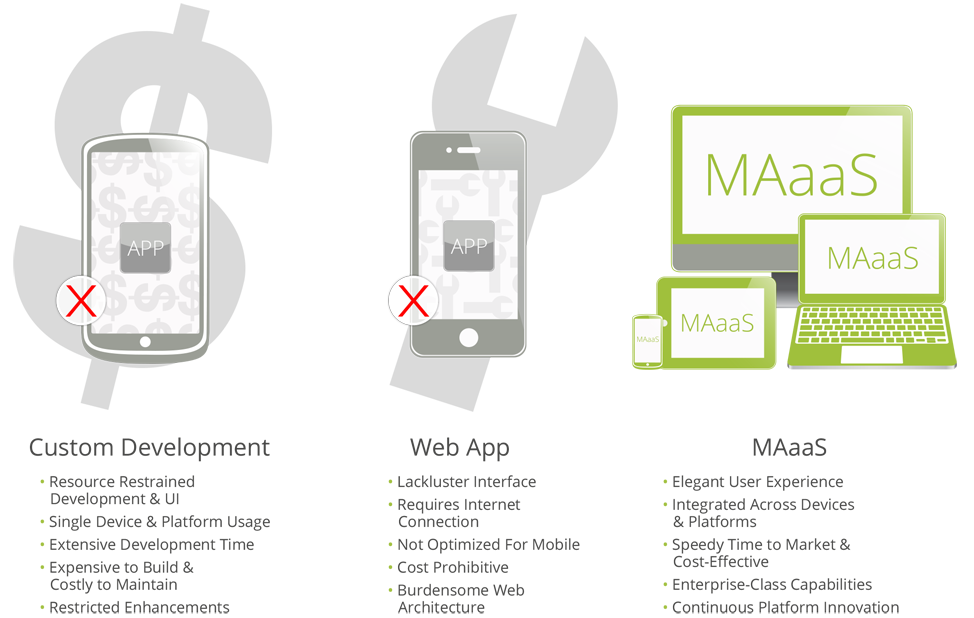We all remember when software as a service (SaaS) was considered a scary and taboo approach to enterprise software deployment. Today it is the new normal in the technology world. We see MAaaS as the same paradigm shift happening in enterprise mobile applications. In our initial MAaaS series post, we provided some baseline information around what Mobile Apps as a Service (MAaaS) is. Now we’ll spend some time exploring what MAaaS is not with hopes that the comparison provides even more context to this revolutionary mobile-first enterprise delivery model.
Not A Custom App
Building a custom app is both timely and expensive. Many large enterprise companies feel that creating a customized app is crucial in order to ensure that the mobile app supports their unique business processes and results in high end-user adoption. At the same time, business leaders are looking for a cost effective and quick to launch solution so that the benefits can be quickly realized. What if you could have both?
Leveraging a mobile-first approach allows for customization on the user interface layer and branding of the application to support company standards – yet the platform itself is sable and secure. This allows for enterprise grade functionality and continually innovative back-end design.
Not An HTML 5 App
HTML5 is a code that allows developers to build web-based apps that run on any device via a standard web browser and it’s supposed to be the hot new thing in mobility. Admittedly, there are many advantages to HTML apps but there are major shortcomings as well.
1. It will only work if you are online. This is a big issue if connectivity is sporadic. An issue that…well everyone…can relate to.
2. You will not get a native app experience that is optimized for each of the major mobile platforms: iOS, Android and Windows8.
3. There are major performance issues related to rendering and reloading.
Not A “One Size Fits All” Solution
It’s important to note that for all the advantages of the MAaaS delivery model, it is definitely not a one size fits all solution. In fact let’s look at an example where looking to MAaaS wouldn’t be the right choice.
Say Home Depot wanted an app that allowed their floor reps to interact with a customer and markup all the things they need for a project, order them, and then swipe the customer’s credit card right there on their tablet and have it all paid for in that one interaction. That is when a custom app would be more applicable.
MAaaS allows you to mobilize the 1% to 10% of your core applications that 99% of your mobile uses will use or access. Not everything should be mobilized. Hopefully by recognizing what a MAaaS solution isn’t, you have a better understanding of the differentiators of a MAaaS approach.
Do you feel you have a better understanding of what MAaaS is and what MAaaS is not? Please feel free to ask any questions about MAaaS in the comments below. As well, make sure to check out our other MAaaS Blog HERE for more information on MAaaS!



Comments are closed.